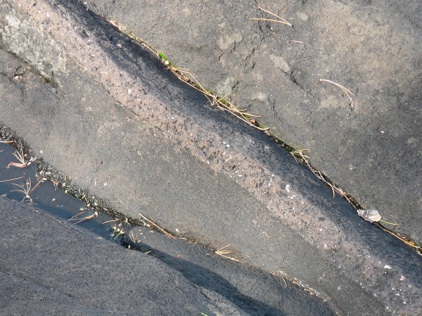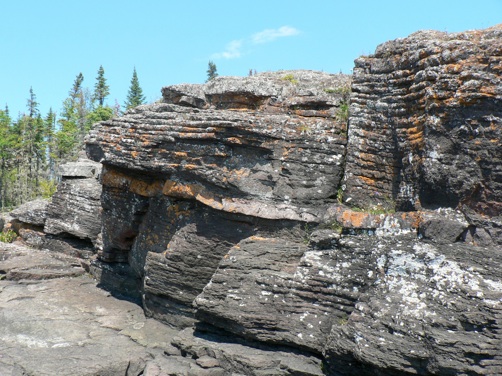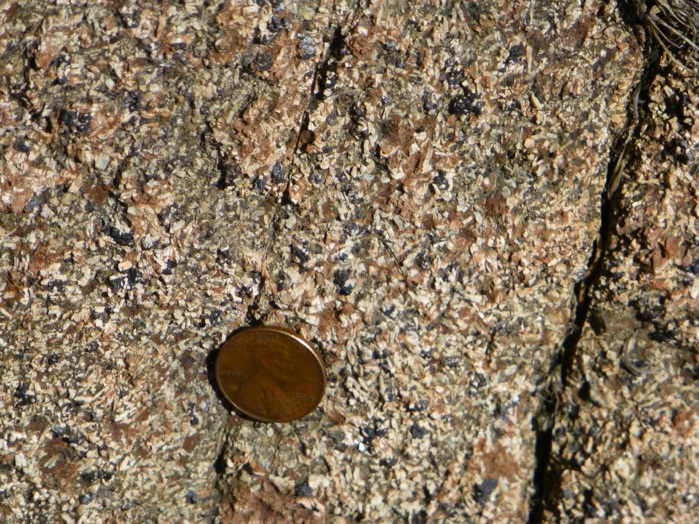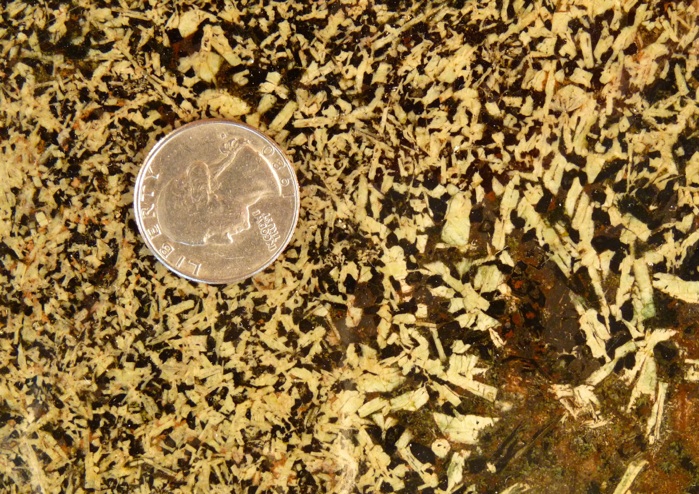In Keweenawan flows pegmatite (or pegmatoid) layers are conspicuous, especially in the thicker flows. They appear to be analogous to vesicle sheets that are found in most flood basalts, but they may result from more evolution during the longer solidification times.



This collection of beach cobbles shows obvious texture of Keweenawan lava pegmatite--note conspicuous plagioclase laths. These layers have vesicular texture and are typically mineralized with zeolite facies minerals.
The thickest lava flows in the Keweenawan Portage Lake Volcanics contain horizons called “pegmatites”, “pegmatoids” or “dolerites”. The following description of these features is from Longo (1984):

--Longo 1984
Pegmatites are found to be especially well developed in thicker flows such as the Greenstone (pg), which can be more than 1200 ft thick. Pegmatite layers (up to 30 ft thick) are found above the flows midpoint at a stratigraphic layer analogous to the vesicle sheets near the top of the core of idealized pahoehoe flows as described by Self et al., 1998 (see Flow Structure). Cornwall shows a Greenstone flow section from the Keweenaw (see below).
In thinner flows pegmatite layers are thin (often a few cm) and resemble vesicle sheets (see figure below).
Columnar section through Greenstone Flow at Delaware, on the Keweenaw, showing Pegmatite layers (black) in upper part of the 1300 ft section (Cornwall, 1951).

Lower Ophite
Upper Ophite


Cornwall, 1951


Pegmatite layer within horizontally fractured section of 20-30 m thick flow on Raspberry Island. This layer is about 5 m stratigraphically above segregation cylinders.

Thin pegmatite or vesicle sheet from 6 m thick lava flow of Lake Shore Traps, Silver Island.

Below: Polished surface of a pegmatite boulder from the Greenstone Flow, Passage Island.



